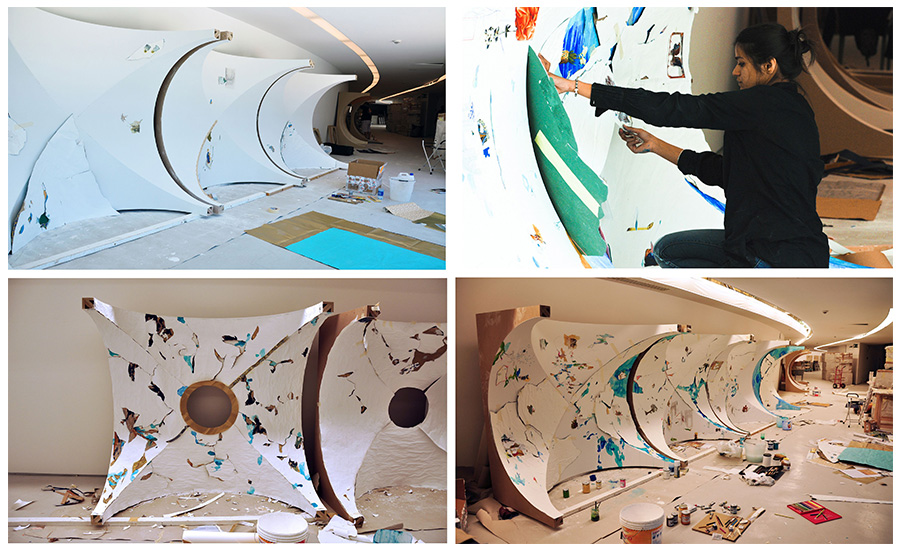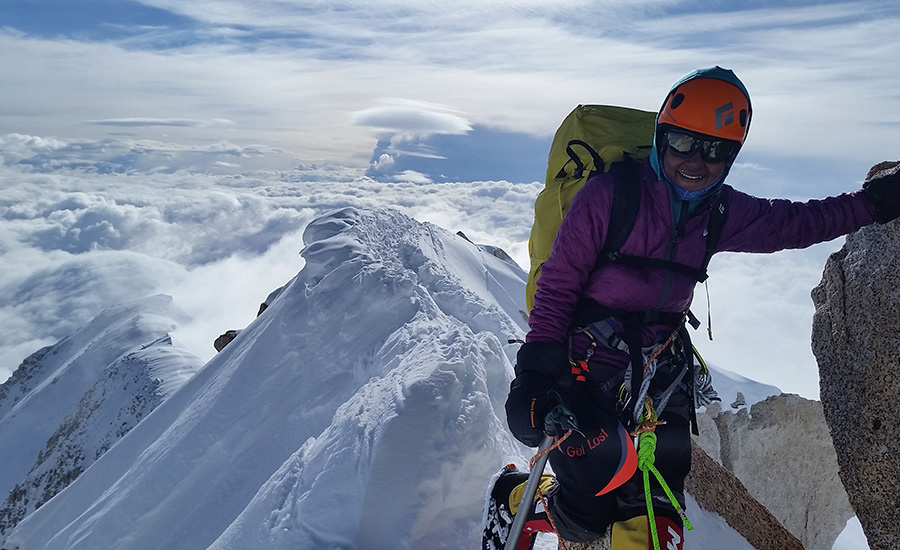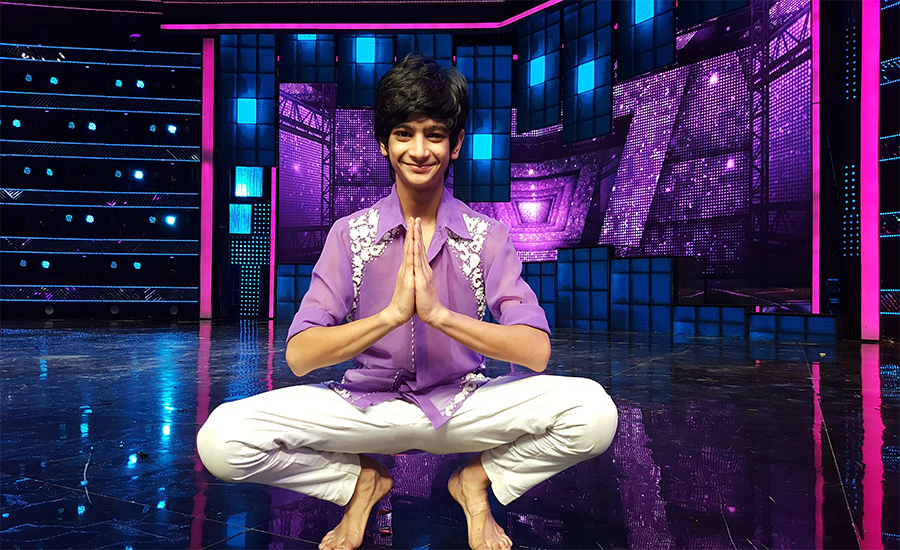

An artist & educator whose investigations into space, time, illusions, microcosms, memory and metaphysics break boundaries of form and thought; meet the layers of World Recognized Artist - Sumakshi Singh
Known As
Sumakshi Singh
Mother's Name
Monica
Father's Name
Daljit Singh
Birthday
15th January 1980
Place from
Gurgaon, India
Proudly says ‘imd1’ for
Installations, Painting/Drawing, Sculpture, Art
Art has no definition. The thought process of an artist has often proved to be illimitable and enduring. Creating the illusion of a space within another completely different physical space is no easy task. Artist Sumakshi Singh’s practice has broken wide open the common perceptions and ideas about art and its various forms. Her projects tread the fine line between thought and feeling, narrative and allegory, veracity and illusion, memory and present, the personal and the cultural…and perhaps even the universal. An internationally recognized contemporary artist, born in Delhi and trained at MS University, Baroda and the School of the Art Institute of Chicago; she has travelled all over the world teaching, working & exhibiting. There is a flow of the personal and often the metaphysical narrative in all her work, be it drawing, painting, space based, or thread work. She has taught for several years at the School of the Art Institute of Chicago, lectured at Oxford University, Columbia University and several other colleges & museums and has mentored residencies in India and abroad. She has presented her work in solo and curated group gallery exhibitions all over the world. The list of her achievements & exhibitions is commendable, and she has received several awards at a young age. Ellen Key rightly said, “When one paints an ideal, one does not need to limit one’s imagination”.
Team imd1 had a chat with her a few days ago, read on to know her further!
We are really keen to know; how did your journey begin?
From the age of 2 years, I knew I would be an artist. When I turned 10, an interest in studying Astrophysics began which continues to this day. But somehow, I was more blown away by the nature of art and its mysteriousness; a process where part of you disappears while making it and reappears (often surprised to see what had been made), its ability to access layers of my being that my mind hadn’t yet grasped, its ability to communicate psychological secrets, the richness of its radial exploration and non-linear discovery…and so many more things. Due to my father’s job profile, we lived in different places all over the country. Wherever we went, I found myself enrolled in various art courses, workshops and competitions. I did my Bachelor’s in Fine Arts program, Painting & Drawing from MSU Baroda (Maharaja Sayajirao University). Then I went to (SAIC) The School of The Art Institute of Chicago, to do my Master’s in Fine Arts program where my work transformed from painting/drawing to installations, space and site-based work. I was subsequently offered a teaching position at SAIC, so I taught and worked as an artist in Chicago for another 5 years. One of the courses I enjoyed teaching was called “Research Studio” where students learnt various approaches to art-making. In some cases, it was a “concept-down” approach and in others a “material- up” approach – So if you have an idea (triggered by say a political issue or beauty or gender issues etc) and want to convert your idea into art. The course would then cover how to build, organize and use an archive of research to enrich your idea artistically, and this research could be making video recordings, sketches, collecting leaves, photographing expressions, collecting data and material, and many more strategies. So, this is when you first conceptualize the idea and then work on the material format it must take. Some students are inclined to go other way, first they gather the material to experiment, or are engaged in some form of craft, or respond to techniques and then build an idea from play with material and of course there are ways to mentor that approach.
What’s your success mantra?
Gratitude. I feel lucky to be able to live a life where I have the privilege of being able to slow down, look again, re-evaluate the givens, un-bracket my conditioned way of perceiving and find something new in the mundane. To be given the opportunity to unlock your conceptual and perceptual frames every day is a rare gift.
Beyond Art
Your Quote for life
“People are over-trained to look AT things; if they could learn to look IN-BETWEEN them, whole universes would open up” - Swami Jnanananda Giri
Favorite Personalities
Swami Kriyananda, Swami Jnanananda, Mooji and other amazing beings who cannot really be called “personalities” anymore
Inspiration
Meditation, Hikes, Metaphysics and Spirituality, Yoga
Food I Love
Veg Pho (Vietnamese soup), moong dal and chawal, Kashmiri greens, Rajma, salads
Food I Hate
I guess that would be Domino’s Pizza
Had I not been an Artist then…
A Yogi
Like Vacations at
In the quieter areas of the Himalayas
Favorite Pass time
Walking in Nature
What were the hardships / hurdles you encountered and the way you overcame in your journey?
If one chooses art as a career, he/she must be mentally prepared for financial unpredictability. One also needs to be quite self-motivated (there could be periods where there are no shows or external deadlines, but one has to keep excavating oneself for artistic inspiration and practice). For me – I have found that I cannot afford to compromise on the integrity of the idea- it results in mediocre, contrived looking work – so it requires a certain amount of energy and awareness to hold to the original energy level of the inspiration. It also requires trust in intuition, that often reveals itself in a continuous present- moment to fresh moment of new guidance, a new idea- so it might require risking your entire “plan” for your work because your intuition has just told you to turn your brush left and giving yourself permission to fail if necessary. In my profession logistics is challenging. I am incessantly working with carpenters, projector technicians, IT guys, lighting “experts”, embroiderers and new assistants in different countries- asking them to help me create solutions which require them to think out of the box and not everyone likes that. Bringing them all together can be a challenging orchestration – especially in India where timing can be subjectively interpreted! Sometimes infrastructure is an issue- you are working with sub-standard equipment or on a project which requires 6 projectors but there is no electricity!
Who has been your influencer in this journey & how?
My mother was a very creative person, a big influence in my life and art practice and had always encouraged me. There have been many other teachers, artists, writers and peers who have inspired me and it’s quite impossible to make such a long list. Our professor of Indian aesthetics in Baroda really opened our eyes to the subtle nuances of art-making – how it can hold the vibration of the consciousness of the artist, professors in Chicago really showed us how to fine tune and articulate our concepts and metaphors. Artists like Olafur Eliasson, James Turrell, Richard Tuttle, Francis Alys, Ann Hamilton, Doric Salcedo, Vija Clemins, Gordon Matta Clark, Louise Bourgeois and so many, many more have been inspirations. Lastly but probably the most important has been time spent with Yogis who have fuelled the fire of questions which lead to my art-making. (Art- making is a way for me to process questions about where I am within myself and within the world).
Which was “that” moment when you consider yourself as “I Am The 1”?
I really don't ever feel it in the way that you are asking. Let me explain. Often what flows through me and becomes “Art”, surprises me and at art openings when people congratulate me on the work, I always feel a little detached from the work and also very grateful about where this work has come from and whose is it really? With this feeling I guess it is more of question then “Am I The 1", that is really responsible for this?” and most often the answer seems like “probably not”.
What according to you, can be a scope for improvement in training for Art in India?
India has some amazing, talented artists. Many are creatively focussed and generous (which usually makes for good teachers). We have the resources and manpower but often lack motivation for implementation - of new ways of doing things. I get requests from students for internships who feel that their learning is more academically frozen and stuck to an ancient syllabus rather than functional for the rapidly changing and expanding art-world. This is a pity because if a student is hungry for a challenging education, he/ she should be able to get it. Several institutions which have come up in Mumbai, Greater Noida, Bangalore and other cities seem to be doing a good job of encouraging experimental art practices.
What do you suggest for better accessibility of Art in remote parts of India?
In Israel I have a friend who runs a travelling museum and travelling library in buses. These museums and libraries park for months or weeks in various rural areas, the locals participate in workshops and choose to make a permanent space to house the museum or library or build their own – there are art film screenings on the sides of the buses, talks, cultural activities… There are also many residencies created for artists. City artists can work in rural areas and vice versa, some residencies involve community-based practices. E.g. KHOJ, Gram Art Project, KAYTA, HH residency and many more. Internet based projects, art shows and workshops…There are many ways to start this, but to sustain it is what requires energy.
Any other thoughts you want to share?
Just that I feel it is such a joy to be able to process life in this right brain way and whether or not the reader chooses art as a profession – I hope he/ she continues to engage with it, to allow themselves a break from the left brain systems of codified knowledge and enter this information rich space of feeling, psychology, intuition, concept….














